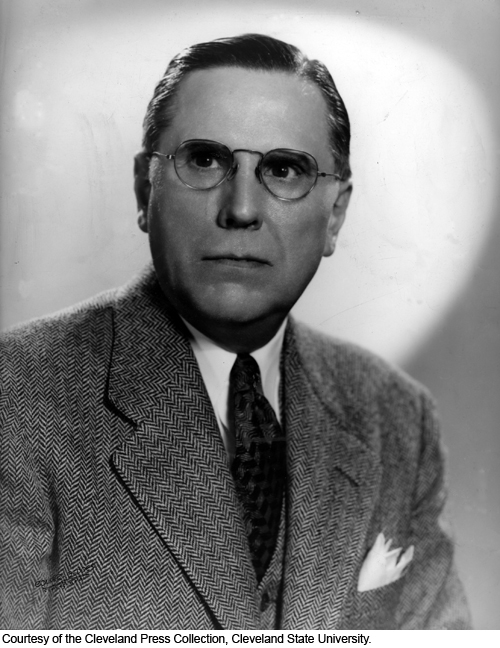|
Alexander C. Robinson III, FAIA, Architect and Civic Leader, 1892–1985 1974 SPECIAL CITATION FOR DISTINGUISHED SERVICE TO THE ARTS
“He was a very good fellow, and a great representative of our profession,” recalls Peter van Dijk. Now retired himself, Cleveland Arts Prize winner van Dijk joined the same architectural firm a few years after Robinson retired and later became a principal of what is now Westlake Reed Leskosky. However, since Robinson remained actively involved in his beloved field until his death at age 93, van Dijk encountered “the dean” on a regular basis, such as at the monthly meetings of the Cleveland chapter of the American Institute of Architects (AIA). “People looked up to him,” van Dijk continued. “He was very much what I would describe as the old school style architect: a perfect gentleman, very polite, very kind, always dapperly dressed and charming.” Born in Sewickley, Pennsylvania, Robinson graduated in 1910 from Hill School, a preparatory school in Pottstown, Pennsylvania. He received his bachelor’s degree from Princeton University in 1914 and in 1917 earned a bachelor’s degree in architecture from Columbia University. For the next two years, he worked as a civilian employee in the adjutant general’s office in Washington, D.C., then practiced in Pittsburgh before moving to Cleveland in 1920 to work with Abram Garfield, the architect son of President James A. Garfield. In 1926, Robinson became a partner of the firm Garfield, Harris, Robinson and Schafer, a forerunner of Westlake Reed Leskosky, which is hailed as one of the oldest architectural firms in the nation. As the firm grew and matured, it took on residential design work, such as the Pebble Hill Estate Plantation in Georgia, which helped to ensure its survival during the Great Depression. The firm went on to garner nationally significant commissions such as federal buildings and performed important post-World War II work for the General Services Administration. In the years that Robinson was a principal, the firm was responsible for the design of many landmark Cleveland buildings, including the Cleveland Institute of Art, the Cleveland Institute of Music, the Cleveland Museum of Natural History, the Cuyahoga County Administration Building and Morley Music Hall at Lake Erie College. President of Cleveland AIA from 1935 to 1937, Robinson served as the association's national secretary from 1943 to 1947. Additionally, Robinson was a member of the Cuyahoga County Planning Commission from 1934 to 1946 and a trustee of the Cleveland Institute of Art, the Musical Arts Association, the Cleveland Music School Settlement and the Cleveland Philharmonic Orchestra. Robinson
was elected the first vice chancellor of the newly formed College of
Fellows of the AIA at its first meeting at the University Club in New
York in 1952. He retired on January 1, 1957, becoming an
independent consultant and self-described “father confessor to a
lot of young architects.” A year after winning the Special Citation, Robinson received a gold meal from the Architects Society of Ohio. In 1976, he was inducted into the Cleveland Engineering Society Hall of Fame. He maintained an office to store his records and files pertinent to organizations in which he was active and continued to work there until a month before his death of heart failure in February 1985. —Christopher Johnston
|
Cleveland Arts Prize
P.O. Box 21126 • Cleveland, OH 44121 • 440-523-9889 • info@clevelandartsprize.org
